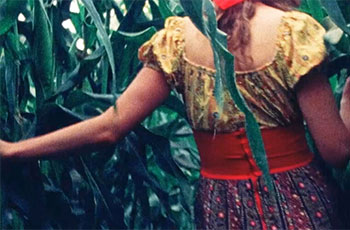
Martin Scorsese created the World Cinema Project (WCP) in 2007 recognizing the urgent need to preserve, restore, and provide access to films from around the world. To date, 70 films from Africa, Asia, Eastern Europe, Central America, South America, and the Middle East have been restored, preserved, and exhibited for global audiences. As part of the WCP, the African Film Heritage Project (AFHP) was launched in 2017 in partnership with the Pan African Federation of Filmmakers (FEPACI) and UNESCO, in collaboration with Cineteca di Bologna, to preserve the legacy of African cinema. The WCP also supports Restoration Film Schools, intensive, results-oriented workshops allowing students and professionals to learn the art and science of film restoration and preservation. Titles are available for exhibition rental by clicking "Book This Film."
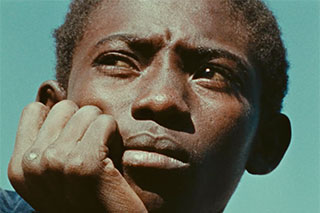
BADOU BOY
Director: Djibril Diop Mambéty
WRITTEN BY: Djibril Diop Mambéty
DIRECTOR OF PHOTOGRAPHY: Baidy Sow
STARRING: Laminé Ba, Al Demba Ciss, Christoph Colomb, Aziz Diop Mambéty
COUNTRY OF PRODUCTION: Senegal
LANGUAGE: French and Wolof with English subtitles
COLOR INFO: Color
RUNNING TIME: 56 miniutes
Restored by The Film Foundation’s World Cinema Project and Cineteca di Bologna at L’Immagine Ritrovata and L’Image Retrouvée laboratories in association with Teemour Diop Mambéty. Restoration funded by the Hobson/Lucas Family Foundation.
This restoration is part of the African Film Heritage Project, an initiative created by The Film Foundation’s World Cinema Project, the Pan African Federation of Filmmakers and UNESCO—in collaboration with Cineteca di Bologna—to help locate, restore, and disseminate African cinema.
NOTES ON THE RESTORATION:
BADOU BOY was restored in 4K using the internegative and the sound negative. Color grading was supervised by Pierre-Alain Meier.
Restoration work was carried out in 2021 at L'Immagine Ritrovata and L'Image Retrouvée laboratories.
With special thanks to Teemour Diop Mambéty.
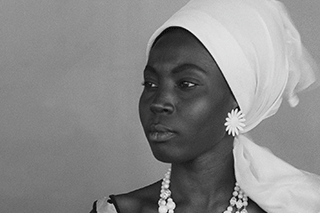
BLACK GIRL
LA NOIRE DE...
Director: Ousmane Sembène
WRITTEN BY: Ousmane Sembène
EDITING: André Gaudier
DIRECTOR OF PHOTOGRAPHY: Christian Lacoste
ASSISTANT CAMERAMAN: Ibrahima Barro
STARRING: Mbissine Thérèse Diop, Anne-Marie Jelinek, Robert Fontaine, Momar Nar Sene, Ibrahima Boy
COUNTRY OF PRODUCTION: Senegal
LANGUAGE: French with English Subtitles
COLOR INFO: B&W
RUNNING TIME: 65 minutes
PRODUCTION COMPANY: Les Films Domirev
Restored by Cineteca di Bologna/ L’Immagine Ritrovata laboratory, in association with the Sembène Estate, Institut National de l’Audiovisuel, INA, Eclair laboratories and the Centre National de Cinématographie. Restoration funded by The Film Foundation’s World Cinema Project.
Black Girl, or La Noire de…, was the first of Ousmane Sembène’s pictures to make a real impact in the west, and I can clearly remember the effect it had when it opened in New York in 1969, three years after it came out in Senegal. An astonishing movie—so ferocious, so haunting, and so unlike anything we’d ever seen.
- Martin Scorsese, May 2015
I am not for “social realism” nor for a “cinema of signs” with slogans and demonstrations. For me revolutionary cinema is something else. If we managed to set up a group of cinéastes who all make cinema directed in the same direction, I believe that then we could influence a little bit of the destinies of our country. I think that the film, more than the book, can crystallize an awakening within the masses. I am personally inspired much by the example of Brecht.
- Ousmane Sembène
In 1961, shortly after Senegal declared its independence from France, Ousmane Sembène, a self-educated dockworker, assigned himself an impossible task: to create a true African cinema as a “night school” for his people. is explosive debut—a film described as the first African feature (true in spirit, if not in fact)—inspired a form of fearless, socially engaged, and uncompromising cinema across the globe. La Noire de … (Black Girl) follows a young girl lured to France by a white bourgeoisie couple, who keep her locked in their flat as a housekeeper. As the daily and unrelenting indignities unfold, Diouana, the title character, literally loses her voice. Sembène highlights her silence, familiar to the voiceless across the globe, yet reveals Diouana’s immense dignity and, by the end, agency. He draws visually from the French Nouvelle Vague (in a film about racial and class divides, the black-and-white photography carries new power) and spiritually from the Italian neorealists, but the film’s heart and soul is African. By turning around the camera—used for 100 years to demean Black people—Sembène offers us the first humanistic gaze at Africans.
But the film (shot mostly in Dakar) also remains a seminal work of cinematic art, as it unfolds with startling precision and decisiveness, providing revealing, unforgettable and richly metaphoric perspective on a never-beforeseen Africa. La Noire de … became a sensation at festivals from Carthage to Pyongyang, and Sembène became the first non-French recipient of the Prix Jean Vigo, given previously to Alain Resnais, Chris Marker, Claude Chabrol and Jean-Luc Godard. In the film’s culminating moment, a boy grabs a mask and haunts the white businessman who entrapped Diouana. As this child pulls the mask from his face, we wonder: Will a new Africa emerge? Nearly 50 years after its initial screenings, the visionary La Noire de … remains a gorgeous, shocking and of-the-moment African story.
- Samba Gadjigo and Jason Silverman
NOTES ON THE RESTORATION:
The restoration of La Noire de… was made possible through the use of the original camera and sound negative provided by INA and the Sembène Estate and preserved at the CNC – Archives Françaises du Film.
In order to try and minimize the presence of visible spots (due to processing errors and aggravated by time) and scratches on the image, the camera negative was wet-scanned at 4K resolution. Due mainly to these two issues, the digital restoration required considerable efforts. A vintage print preserved at the Cinémathèque Française was used as reference.
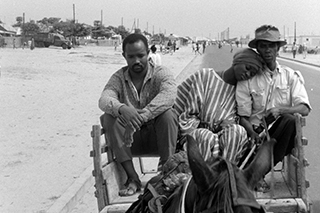
Borom Sarret
Director: Ousmane Sembène
WRITTEN BY: Ousmane Sembene
EDITING: Andre Gaudier
DIRECTOR OF PHOTOGRAPHY: Christian Lacoste
ASSISTANT CAMERAMAN: Ibrahima Barro
FROM: INA/Éclair/Cineteca/Sembene Family
STARRING: Ly Abdoulay, Albourah
COUNTRY OF PRODUCTION: Senegal
LANGUAGE: French and Wolof
COLOR INFO: Black and White
RUNNING TIME: 22'
ON COMPANY: INA
Restored in 2013 by Cineteca di Bologna/L’Immagine Ritrovata laboratory and Laboratoires Éclair, in association with The Film Foundation’s World Cinema Project, the Institut National de l’Audiovisuel, and the Sembène Estate. Restoration funded by Doha Film Institute.
I think given the fact that there is such a diversity of languages in Africa, we, African filmmakers, will have to find our own way in order to ensure that the message be understood by everyone, or we’ll have to find a language that comes from the image and the gestures. I think I would go as far as to say that we will have to go back and see some of the silent films and in that way find new inspiration.
Contrary to what people think, we talk a lot in Africa but we talk when it’s time to talk. There are also those who say blacks spend all of their time dancing – but we dance for reasons which are our own.
Dancing is not a flaw in itself, but I never see an engineer dancing in front of his machine, and a continent or a people do not spend its time dancing.
All of this means that the African filmmaker’s work is very important – he must find a way that is his own, he must find his own symbols, even create symbols if he has to.
[...] I then realized Borom Sarret, my first true short film. It is the story of a cartman who is, to some extent, the taxi driver of a horse-drawn cart. Confronted by a rich customer in a residential district prohibited to such a type of vehicle, a cop stops him, makes a complaint, and seizes the cart. Relieved of his livelihood, the poor fellow remains sadly in his place. His wife entrusts the guardianship of their children to him while saying to him “We will eat this evening…” For this I got the first work prize at the Festival of Tours in 1963.
-Ousmane Sembène
NOTES ON THE RESTORATION:
The restoration of Borom Sarret was made possible through the use of the original camera and sound negatives provided by INA and preserved at Éclair Laboratories.
The film was scanned in 4K at Éclair Laboratories and restored at L’Immagine Ritrovata laboratory. The image was digitally stabilized and cleaned, and all wear marks were eliminated. Image grading helped recover the richness of the original cinematography.
After scanning, the sound was digitally cleaned and background noise reduction was applied to eliminate all wear marks, without losing any of the dynamic features of the original soundtrack.
The World Cinema Foundation would like to specially thank Alain Sembène and the Sembène Family for facilitating the restoration process.
Image: © Courtesy of INA
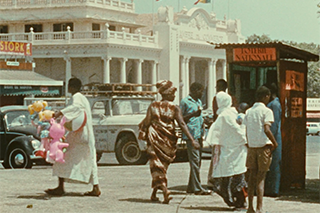
CONTRAS' CITY
CITY OF CONTRASTS
Director: Djibril Diop Mambéty
WRITTEN BY: Djibril Diop Mambéty
EDITING: Jean-Bernard Bonis, Marino Rio
DIRECTOR OF PHOTOGRAPHY: Georges Bracher
COUNTRY OF PRODUCTION: Senegal
LANGUAGE: Wolof with English Subtitles
COLOR INFO: Color
RUNNING TIME: 22 minutes
Restored in 2020 by Cineteca di Bologna/L'Immagine Ritrovata and The Film Foundation's World Cinema Project in association with The Criterion Collection. Funding provided by the Hobson/Lucas Family Foundation.
This restoration is part of the African Film Heritage Project, an initiative created by The Film Foundation’s World Cinema Project, the Pan African Federation of Filmmakers and UNESCO – in collaboration with Cineteca di Bologna – to help locate, restore, and disseminate African cinema.
NOTES ON THE RESTORATION:
The 4K restoration of CONTRAS' CITY was made from the internegative as well as the original sound negatove provided by Teemour Mambéty and preserved at LTC Patrimoine. A vintage print of the film was used as reference for color grading.
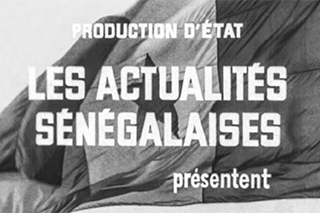
IFE / 3ÈME FESTIVAL DES ARTS
Director: Paulin Soumanou Vieyra
COUNTRY OF PRODUCTION: Senegal
LANGUAGE: French with English subtitles
COLOR INFO: Black and White
RUNNING TIME: 13 minutes
Restored by The Film Foundation’s World Cinema Project and Cineteca di Bologna at L’Immagine Ritrovata laboratory, in collaboration with the Ministère de la Culture et du Patrimoine Historique de Sénégal – Direction du Cinéma. Restoration funded by the Hobson/Lucas Family Foundation.
This restoration is part of the African Film Heritage Project, an initiative created by The Film Foundation's World Cinema Project, the Pan African Federation of Filmmakers and UNESCO―in collaboration with Cineteca di Bologna―to help locate, restore, and disseminate African cinema.
NOTES ON THE RESTORATION:
The 4K restoration was completed using a 16mm print preserved by the Direction du Cinéma in Senegal. With special thanks to Tiziana Manfredi and Marco Lena.

LE SÉNÉGAL ET LE FESTIVAL MONDIAL DES ARTS NÈGRES
Director: Paulin Soumanou Vieyra
COUNTRY OF PRODUCTION: Senegal
LANGUAGE: French with English subtitles
COLOR INFO: Black and White
RUNNING TIME: 28 minutes
Restored by The Film Foundation’s World Cinema Project and Cineteca di Bologna at L’Immagine Ritrovata laboratory, in collaboration with the Ministère de la Culture et du Patrimoine Historique de Sénégal – Direction du Cinéma. Restoration funded by the Hobson/Lucas Family Foundation.
This restoration is part of the African Film Heritage Project, an initiative created by The Film Foundation's World Cinema Project, the Pan African Federation of Filmmakers and UNESCO―in collaboration with Cineteca di Bologna―to help locate, restore, and disseminate African cinema.
NOTES ON THE RESTORATION:
The 4K restoration was completed using a 16mm print preserved by the Direction du Cinéma in Senegal. With special thanks to Tiziana Manfredi and Marco Lena.

SÉNÉGAL AN XVI
Director: Babacar Gueye and Orlando Lopez
COUNTRY OF PRODUCTION: Senegal
LANGUAGE: French with English subtitles
COLOR INFO: Black and White
RUNNING TIME: 21 minutes
Restored by The Film Foundation’s World Cinema Project and Cineteca di Bologna at L’Immagine Ritrovata laboratory, in collaboration with the Ministère de la Culture et du Patrimoine Historique de Sénégal – Direction du Cinéma. Restoration funded by the Hobson/Lucas Family Foundation.
This restoration is part of the African Film Heritage Project, an initiative created by The Film Foundation's World Cinema Project, the Pan African Federation of Filmmakers and UNESCO―in collaboration with Cineteca di Bologna―to help locate, restore, and disseminate African cinema.
NOTES ON THE RESTORATION:
The 4K restoration was completed using a 16mm print preserved by the Direction du Cinéma in Senegal. With special thanks to Tiziana Manfredi and Marco Lena.
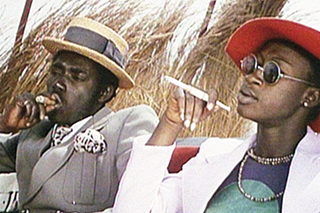
TOUKI BOUKI
Director: Djibril Diop Mambéty
WRITTEN BY: Djibril Diop Mambéty
EDITING: Siro Asteni
DIRECTOR OF PHOTOGRAPHY: Pap Samba Sow, Georges Bracher
MUSICAL DIRECTOR: Joséphine Baker, Mado Robin, Aminata Fall
SOUND: El Hadji Mbow
FROM: GTC Paris
STARRING: Magaye Niang (Mory), Mareme Niang (Anta), Aminata Fall (Tante Oumy), Ousseynou Diop (Charlie)
COUNTRY OF PRODUCTION: Senegal
LANGUAGE: Wolof with French and English subtitles
COLOR INFO: Color
RUNNING TIME: 88 minutes
PRODUCTION COMPANY: Cinegrit
Restored in 2008 by Cineteca di Bologna/L’Immagine Ritrovata laboratory, in association with The Film Foundation’s World Cinema Project and the family of Djibril Diop Mambéty. Restoration funded by Armani, Cartier, Qatar Airways and Qatar Museum Authority.
Touki Bouki is a prophetic film. Its portrayal of 1973 Senegalese society is not too different from today’s reality. Hundreds of young Africans die every day at the Strait of Gibraltar trying to reach Europe (Melilla and Ceuta). Who has never heard of that before? All their hardships find their voice in Djibril’s film: the young nomads who think they can cross the desert ocean and find their own lucky star and happiness but are disappointed by the human cruelty they encounter. Touki Bouki is a beautiful, upsetting and unexpected film that makes us question ourselves. What a pleasure and what an achievement for Martin Scorsese’s Foundation to give Djibril Diop Mambéty a second life. To all those who support cinema: bravo! –Souleymane Cissé, May 2008
NOTES ON THE RESTORATION:
Touki Bouki has been digitally restored at 2K resolution using the original 35 mm camera and sound negatives provided by the director’s son Teemour Diop Mambéty and preserved at the GTC in Paris. Digital restoration brought the film’s original chromatic elements to light. At the end of the digital process a new 35 mm internegative was produced.
Image: © Courtesy of Teemour Diop Mambéty

VOYAGE AUX ANTILLES DU PRÉSIDENT SENGHOR
Director: Georges Caristan
COUNTRY OF PRODUCTION: Senegal
LANGUAGE: French with English subtitles
COLOR INFO: Black and White
RUNNING TIME: 17 minutes
Restored by The Film Foundation’s World Cinema Project and Cineteca di Bologna at L’Immagine Ritrovata laboratory, in collaboration with the Ministère de la Culture et du Patrimoine Historique de Sénégal – Direction du Cinéma. Restoration funded by the Hobson/Lucas Family Foundation.
This restoration is part of the African Film Heritage Project, an initiative created by The Film Foundation's World Cinema Project, the Pan African Federation of Filmmakers and UNESCO―in collaboration with Cineteca di Bologna―to help locate, restore, and disseminate African cinema.
NOTES ON THE RESTORATION:
The 4K restoration was completed using a 16mm print preserved by the Direction du Cinéma in Senegal. With special thanks to Tiziana Manfredi and Marco Lena.
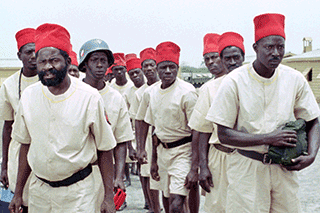
CAMP DE THIAROYE
Director: Ousmane Sembène and Thierno Faty Sow
WRITTEN BY: Ousmane Sembène and Thierno Faty Sow
EDITING: Kahéna Attia
DIRECTOR OF PHOTOGRAPHY: Smaïl Lakhdar-Hamina
PRODUCER: Mustafa Ben Jemja, Ouzid Dahmane, Mamadou Mbengue
MUSICAL DIRECTOR: Ismaël Lô
STARRING: Sidiki Bakaba, Hamed Camara, Ismaila Cissé, Ababacar Sy Cissé, Moussa Cissoko, Eloi Coly, Ismaël Lô, Pierre Londiche
COUNTRY OF PRODUCTION: Senegal, Algeria, Tunisia
LANGUAGE: German, French, Wolof, English
COLOR INFO: Color
RUNNING TIME: 153 minutes
PRODUCER: Mustafa Ben Jemja, Ouzid Dahmane, Mamadou Mbengue
Restored by The Film Foundation’s World Cinema Project and Cineteca di Bologna at L’Immagine Ritrovata laboratory in association with the Tunisian Ministry of Cultural Affairs and the Senegalese Ministry of Culture and Historical Heritage. With special thanks to Mohamed Challouf and Association Ciné-Sud Patrimoine. Restoration funded by the Hobson/Lucas Family Foundation.
This restoration is part of the African Film Heritage Project, an initiative created by The Film Foundation’s World Cinema Project, the Pan African Federation of Filmmakers and UNESCO – in collaboration with Cineteca di Bologna – to help locate, restore, and disseminate African cinema.
NOTES ON THE RESTORATION:
CAMP DE THAIROYE was restored in 4K at L'Immagine Ritrovata using a second-generation internegative and the original sound negative, preserved at the Tunisian Ministry of Cultural Affairs.
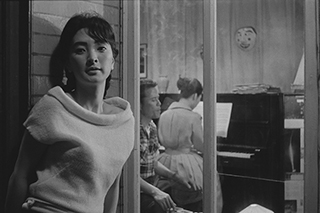
HOUSEMAID, THE
HANYO
Director: Kim Ki-Young
WRITTEN BY: Kim Ki-Young
EDITING: Kim Ki-Young
DIRECTOR OF PHOTOGRAPHY: Kim Deok-jin
PRODUCER: Kim Young-chul
MUSICAL DIRECTOR: Han Sang-Ki
ART DIRECTOR: Park Seok-in
STARRING: Lee Eunshim (Housemaid), Kim Jin-kyu (Dong-sik), Ju Jeung-nyeo (Dong-sik’s wife), Um Aeng-ran (Cho Kyung-hee)
COUNTRY OF PRODUCTION: South Korea
LANGUAGE: Korean with English subtitles
COLOR INFO: Black and White
RUNNING TIME: 110 minutes
PRODUCTION COMPANY: Korean Munye Films Co., Ltd.
PRODUCER: Kim Young-chul
Restored in 2008 by the Korean Film Archive (KOFA), in association with The Film Foundation's World Cinema Project and HFR-Digital Film laboratory. Additional restoration funded by Armani, Cartier, Qatar Airways and Qatar Museum Authority.
Kim Ki-young’s Hanyo, or The Housemaid, is one of the true classics of South Korean cinema, and when I finally had the opportunity to see the picture, I was startled. That this intensely, even passionately claustrophobic film is known only to the most devoted film lovers in the west is one of the great accidents of film history. I’m proud that the World Cinema Foundation is participating in the restoration and preservation of this remarkable picture. I am eager for more people to get to know and love The Housemaid.
–Martin Scorsese, February 2008
NOTES ON THE RESTORATION:
Hanyo has been restored digitally by the Korean Film Archive (KOFA) with the support of the World Cinema Foundation. The original negative of the film was found in 1982 with two missing reels, 5 and 8. In 1990 an original release print with hand-written English subtitles was found and used to complete the copy. This surviving print was highly damaged, and the English subtitles occupied almost half of the frame area. The long and complex restoration process has involved the use of a special subtitle-removal software and included flicker and grain reduction, scratch and dust removal, color grading.
Image: © Courtesy of Korean Film Archive
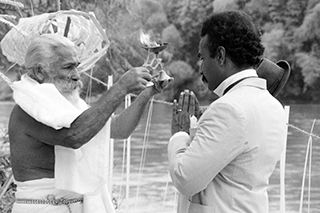
TREASURE, THE
NIDHANAYA
Director: Lester James Peries
WRITTEN BY: Tissa Abeysekera
EDITING: Lester James Peries, Edwin Leetin, Gladwyn Fernando
DIRECTOR OF PHOTOGRAPHY: M.S. Anandan
ADAPTED BY: G. B. Senanayake
MUSICAL DIRECTOR: Premasiri Khemadasa
ART DIRECTOR: J.A. Vincent Perera
STARRING: Gamini Fonseka, Malani Fonseka, Saman Bokalawala, Francis Perera, Mapa Gunaratne, Shanthi Lekha, Trilicia Gunawardene, Thilakasiri Fernando, J.B.L. Fernando, Thalatha Gunasekera, Kumarasinghe Appuhamy, K.L. Coranelis Appuhamy, Barry Whittington, Wijeratne Warakagoda
COUNTRY OF PRODUCTION: Sri Lanka
LANGUAGE: Sinhala
COLOR INFO: Black and White
RUNNING TIME: 108 minutes
PRODUCTION COMPANY: P.E.E. Anthonypillai for Ceylon Studios
Restored in 2013 by Cineteca di Bologna/L'Immagine Ritrovata laboratory, in association with The Film Foundation’s World Cinema Project, Lester James and Sumitra Peries, the National Film Archive of India, the National Film Corporation of Sri Lanka, Cinemas Ltd. Additional restoration elements provided by Degeto Films. Restoration funded by Doha Film Institute.
Nidhanaya is based on a dark tale by G.B. Senanayake and is considered a milestone film that people, even abroad, admire the most, albeit it is atypical of Lester James Peries’ customary family dramas. The story revolves around a psychotic killer yet is an underlying serious political study on the degradation of a class of society. In 1972 this film won the Silver Lion of St Mark at the 33th Venice International Film Festival and was selected as one of the outstanding films of the year, receiving a Diploma at the London Film Festival. It was also voted as the best film of the first 50 years of Sri Lankan cinema.
My most controversial film is Nidhanaya, which received a very positive reception at the Venice Film Festival. The most accurate critics highlighted that, despite its setting in 1911, this film holds a strong social and political value in denouncing the system. The character is trapped between two cultures: the Western/British one and his culture of origin—he is lost between two worlds. Unable to adapt to either one or the other, he absorbs the worse elements of the two cultures; the society changes and he goes insane.
- Lester James Peries
NOTES ON THE RESTORATION:
The restoration of Nidhanaya was made possible through the use of two key elements: a 35mm positive print struck from the original camera negative and held by Degeto Film, and a combined dupe negative preserved at the National Film Archive of India.
The prints were scanned at 4K resolution. After scanning, the image was stabilized and cleaned, and all wear marks were eliminated. Image grading recovered the richness of the original cinematography. The soundtrack was also digitally cleaned and background noise reduction was applied to reduce imperfections without losing the dynamic features of the original. The digital restoration produced a new 35mm internegative.
The World Cinema Foundation would like to thank the following individuals and organizations for their support: G R Padmaraj and Cinemas Ltd, National Film Corporation of Sri Lanka, National Film Archive of India, Shivendra Singh Dungarpur, Ravindra and Sam Randeniya, and Hubert Niogret.
Special thanks to Lester James Peries and Sumitra Peries for facilitating the restoration process.
Image: © Courtesy of National Film Corporation of Sri Lanka
